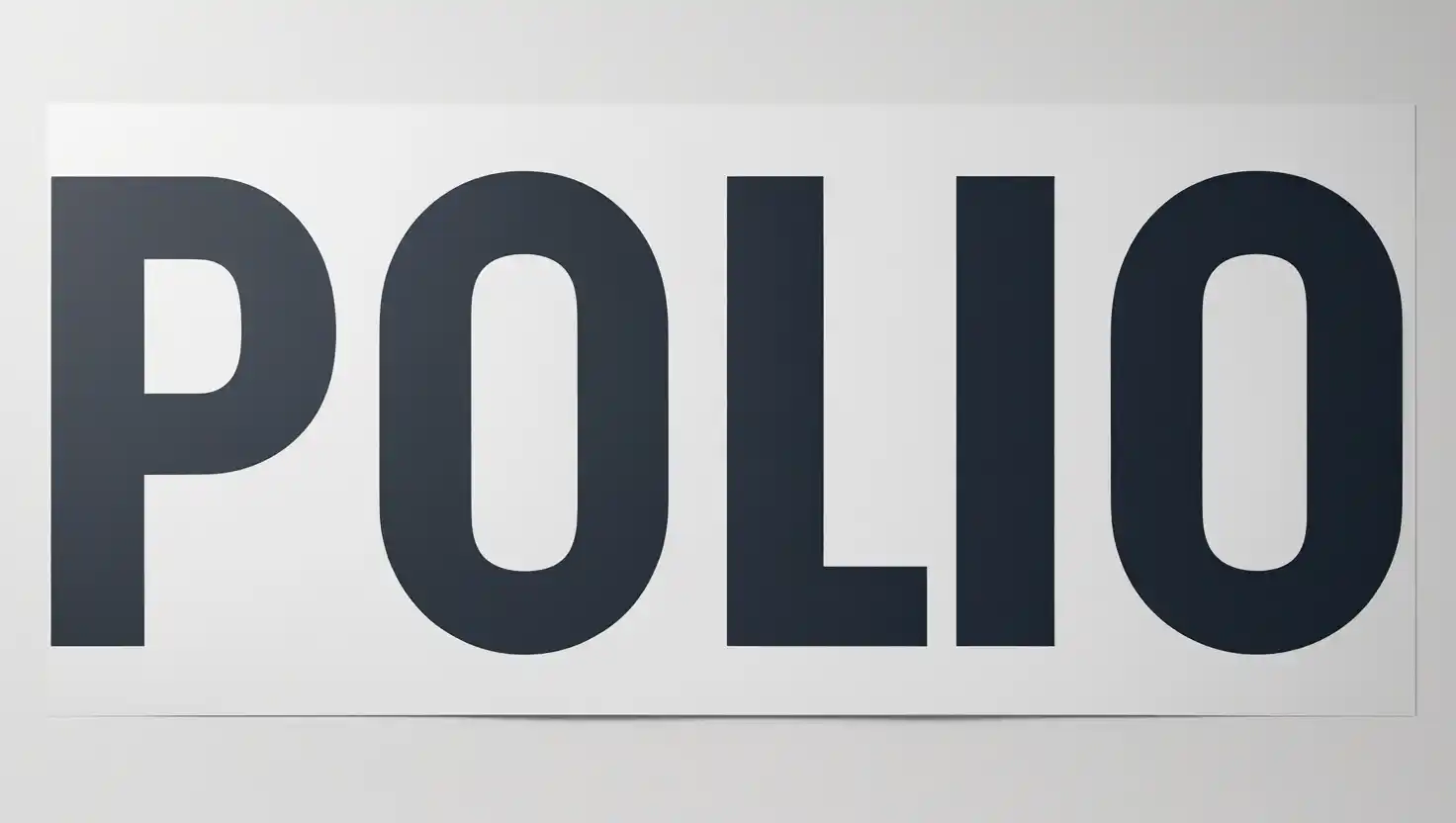Polio

Topics
Introduction
Polio remains one of the most feared diseases of the 20th century, especially before the development of the polio vaccine. Thanks to widespread immunisation campaigns, cases have significantly dropped, but the disease is not entirely eradicated. Understanding polio's transmission, risk factors, symptoms, and prevention is vital to maintaining the progress made so far.
What is Polio?
Poliomyelitis, commonly known as polio, is a viral infection caused by the poliovirus. It primarily affects children under the age of 5 but can strike at any age. The virus targets the nervous system and in severe cases, can cause permanent paralysis or death. Most people infected with the poliovirus do not show symptoms; however, the virus can still be transmitted.
Prevalence
India
India was declared polio-free in 2014 by the World Health Organization (WHO) after years of rigorous vaccination drives. However, given the large population and close proximity to countries still reporting polio cases, surveillance and routine immunisation remain a top priority.
Worldwide
Globally, polio remains endemic in two countries—Afghanistan and Pakistan. According to the WHO, as of 2023, the number of wild poliovirus cases continues to decrease, but outbreaks caused by vaccine-derived poliovirus (cVDPV) have been reported in several countries.
Types of Polio
There are three types of wild poliovirus:
- Type 1 (WPV1) – Still endemic in a few countries.
- Type 2 (WPV2) – Declared eradicated in 2015.
- Type 3 (WPV3) – Declared eradicated in 2019.
There is also vaccine-derived poliovirus (VDPV), which can emerge in under-immunised populations where oral polio vaccine (OPV) viruses mutate and regain virulence.
Causes of Polio
Polio is caused by the poliovirus, which spreads through:
- Faecal-oral route – Consuming contaminated food or water.
- Person-to-person contact – Especially in unsanitary conditions.
- Contact with contaminated surfaces – Including toys and utensils.
After entering the body, the virus multiplies in the intestine and can invade the nervous system.
Symptoms of Polio
Polio has three main forms, each with varying symptoms:
- Subclinical Polio (most common) – No visible symptoms.
- Non-paralytic Polio – Symptoms include:
- Fever
- Sore throat
- Headache
- Vomiting
- Fatigue
- Neck and back stiffness
- Paralytic Polio (most severe) – Symptoms include:
- Muscle weakness
- Severe muscle pain
- Loss of reflexes
- Sudden onset paralysis
- Difficulty breathing or swallowing
Diagnosis of Polio
Diagnosing polio involves several clinical and laboratory tests:
- Medical history and physical exam
- Stool sample analysis – Detects poliovirus.
- Throat swabs
- Cerebrospinal fluid (CSF) analysis – In cases of suspected paralytic polio.
Early diagnosis is critical to prevent further transmission and manage complications effectively.
Treatment of Polio
There is no specific cure for polio. Treatment focuses on alleviating symptoms and preventing complications:
- Pain relievers – To manage muscle aches and spasms. (Crocin Pain Relief Tablet)
- Physiotherapy – Essential for patients with paralysis.
- Respiratory support – In severe cases using ventilators.
- Nutritious diet and rest – To promote recovery. Explore all nutraceutical options on Dawaadost.
In cases of post-polio syndrome, ongoing care and therapy are vital.
Alternative Therapies
While no alternative therapies can cure polio, some supportive treatments may help:
- Acupuncture – For pain management.
- Massage therapy – To relieve muscle stiffness.
- Yoga and meditation – To enhance mobility and mental wellbeing.
These should be used alongside conventional medical treatments.
Risk Factors
The risk of contracting polio increases with:
- Unvaccinated status
- Poor sanitation and hygiene
- Travelling to polio-endemic regions
- Weakened immune system
- Close contact with infected persons
Complications
Polio can lead to several long-term health complications:
- Permanent paralysis – Especially in the legs.
- Muscle atrophy
- Deformities – Such as shortened limbs or twisted feet.
- Post-polio syndrome – Occurs years after recovery, causing fatigue, pain, and new muscle weakness.
- Respiratory failure – If respiratory muscles are affected.
Tips to Live with Polio
For individuals affected by polio, these tips can help improve quality of life:
- Engage in regular physiotherapy.
- Use mobility aids – braces, wheelchairs, or orthopaedic shoes.
- Stay socially active and connected.
- Maintain nutritional health.
- Join support groups to share experiences and coping strategies.
Common Misconceptions About This Condition
- “Polio is eradicated everywhere.”
– False. It is eradicated in most regions but still present in some countries. - “Polio only affects children.”
– Primarily yes, but unvaccinated adults can be affected too. - “Vaccination is not necessary anymore.”
– Incorrect. Continued immunisation is crucial to maintain eradication. - “One dose of vaccine is enough.”
– No. Multiple doses are required for full immunity.
When to See a Doctor
You should consult a healthcare provider if:
- Your child has missed polio vaccinations.
- You or your child shows signs of muscle weakness, fever, or paralysis.
- You are travelling to high-risk areas and need vaccination.
Questions to Ask Your Doctor
- Is my child fully protected against polio?
- Are there side effects to polio vaccines?
- What should I do if my child shows symptoms?
- How effective is the current vaccine?
- Can adults receive polio vaccination?
How to Support Someone Dealing with Polio
Supporting someone with polio involves emotional, physical, and social assistance:
- Help with mobility and daily tasks.
- Encourage therapy and follow-up care.
- Be patient and emotionally supportive.
- Promote their independence and self-esteem.
- Educate others to reduce stigma.
Conclusion
Polio, though now rare in many parts of the world, continues to pose a threat in areas with low immunisation. The key to eliminating polio lies in robust vaccination, hygiene, awareness, and global cooperation. Continued vigilance ensures that we do not reverse the hard-earned progress.
